Weekly Update: MPD Staffing Study
Memphis sent this bulletin at 07/24/2020 05:47 PM CDTFriends,
Last night, 53 new recruits graduated from the academy, and I couldn’t be happier to welcome them to the family. With this new class, it brings our officer count close to 2,100.
Earlier this week, City Council received a presentation from Richard Janikowski and Phyllis Betts both with Strategic City Solutions on our current police staffing and the need for more officers. The findings from their study show we need a little more than 2,800 officers to effectively reduce the crime rate in Memphis.
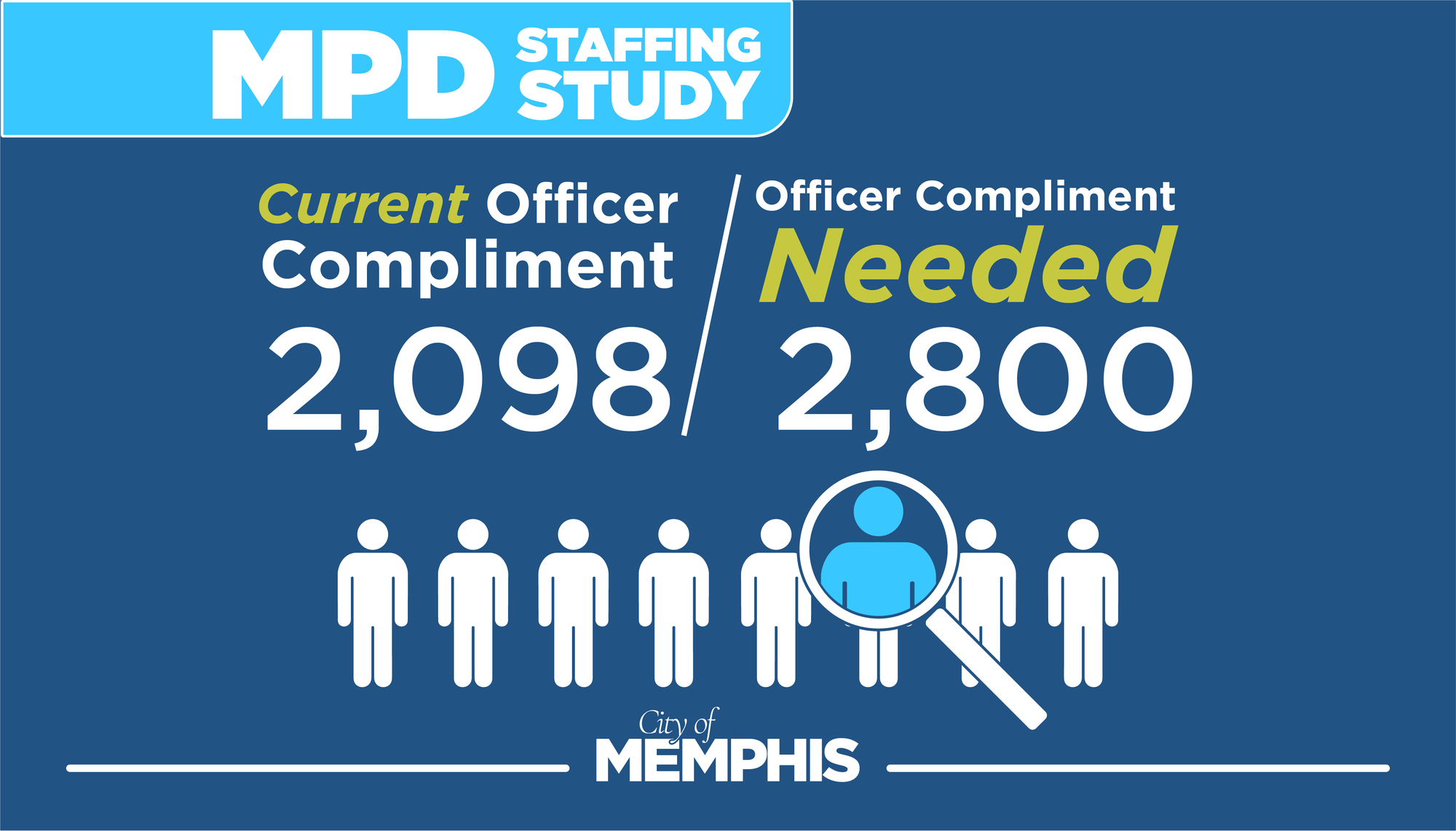
Why do we need that many officers?
First, and I’ve used this chart before, there is a direct correlation with the number of officers in the department and the level of violent crime that happens throughout the city.
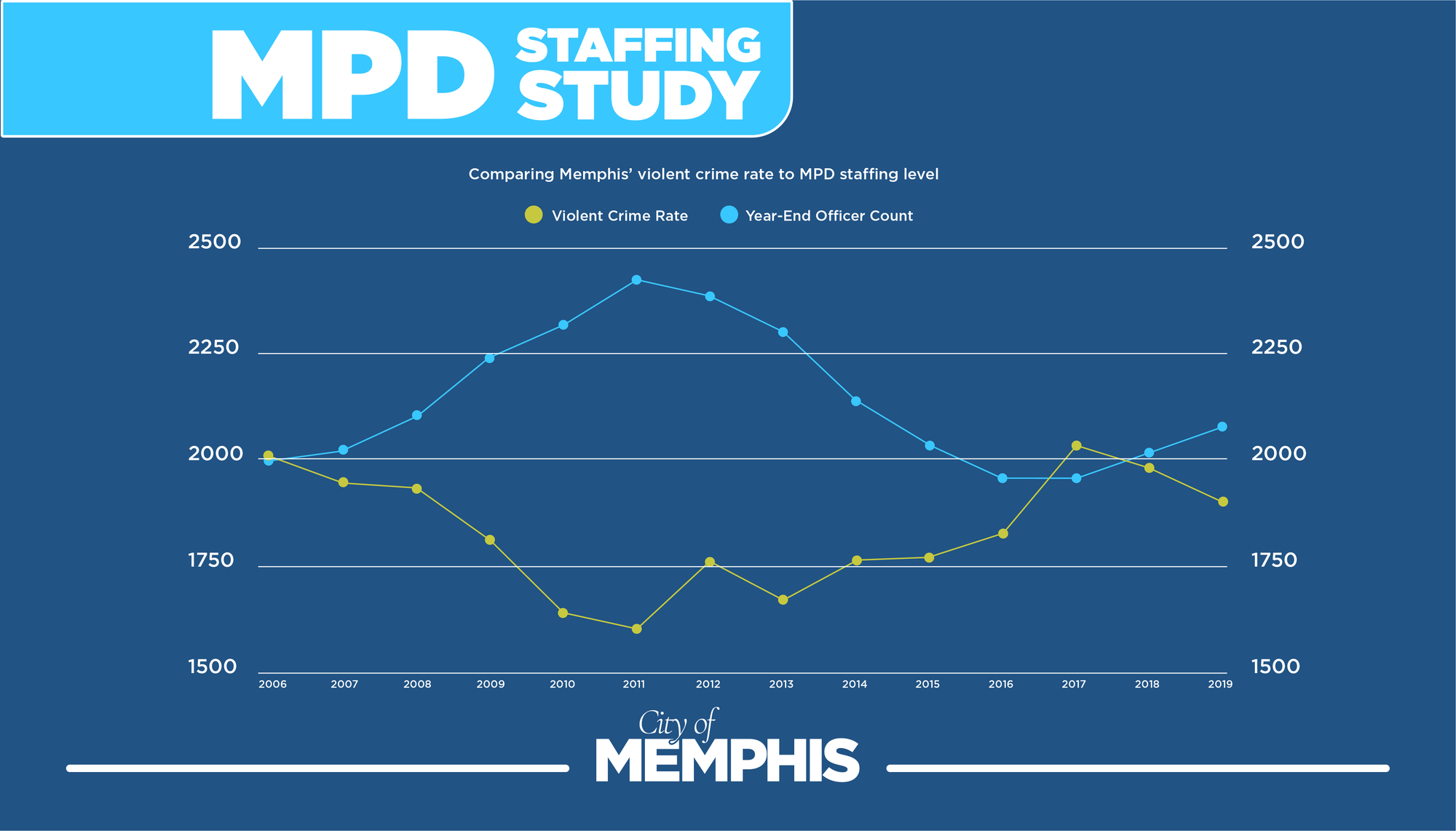
Second, concentrated poverty plays another very important role in the crime rate.
According the study, concentrated poverty in the year 2000 was diffused throughout about 50 percetn of the City of Memphis. While at the same time, the physical territory of Memphis—square miles officers must patrol—also grew through annexation making it more difficult to reduce the crime rate:
• 1990 - 300 sq. mi.
• 2000 - 313 sq. mi.
• 2005 - 340 sq. mi.
• 2021 - 315 sq. mi
To see where we stand among similar situated cities, the study identified communities comparable to Memphis on several socio-demographic variables to compare crime rates and staffing. In order to choose comparison cities, they considered all cities with 250,000-1,000,000 in population with poverty rate at least 20 percent (Memphis has a poverty rate of 27 percent). The average zip code had a “Distress” score of 80-100. (Economic Innovation Group). The percent of the population in distressed zip codes at least 50 percent, and percent of all census tracts in city that are concentrated poverty are at least 50 percent.
From those constraints, the study looked at comparison cities like Baltimore, Buffalo, Cincinnati, Cleveland, Detroit, Milwaukee, Newark, St. Louis, and Stockton. In the chart below, you will see how Memphis stacks up against our peer cities.
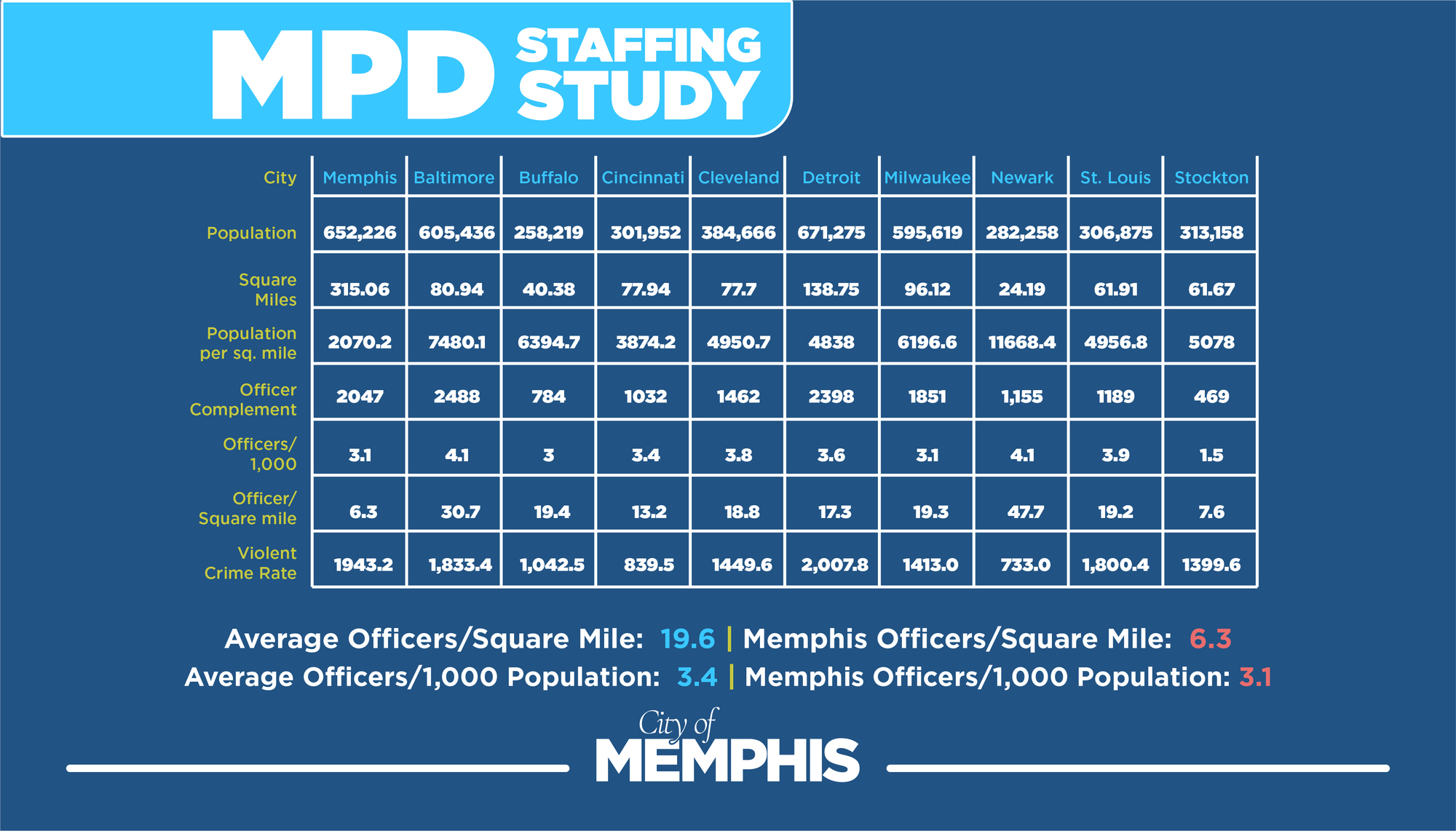
Now, another important data point to note is calls for service. The graph below shows calls for service for officers in Seattle compared to calls for service for our Memphis officers. You’ll notice that Seattle was not one of our comparison cities, but I wanted to use this slide as a point of reference to demonstrate the volume of work our officers are required to perform on a daily basis.
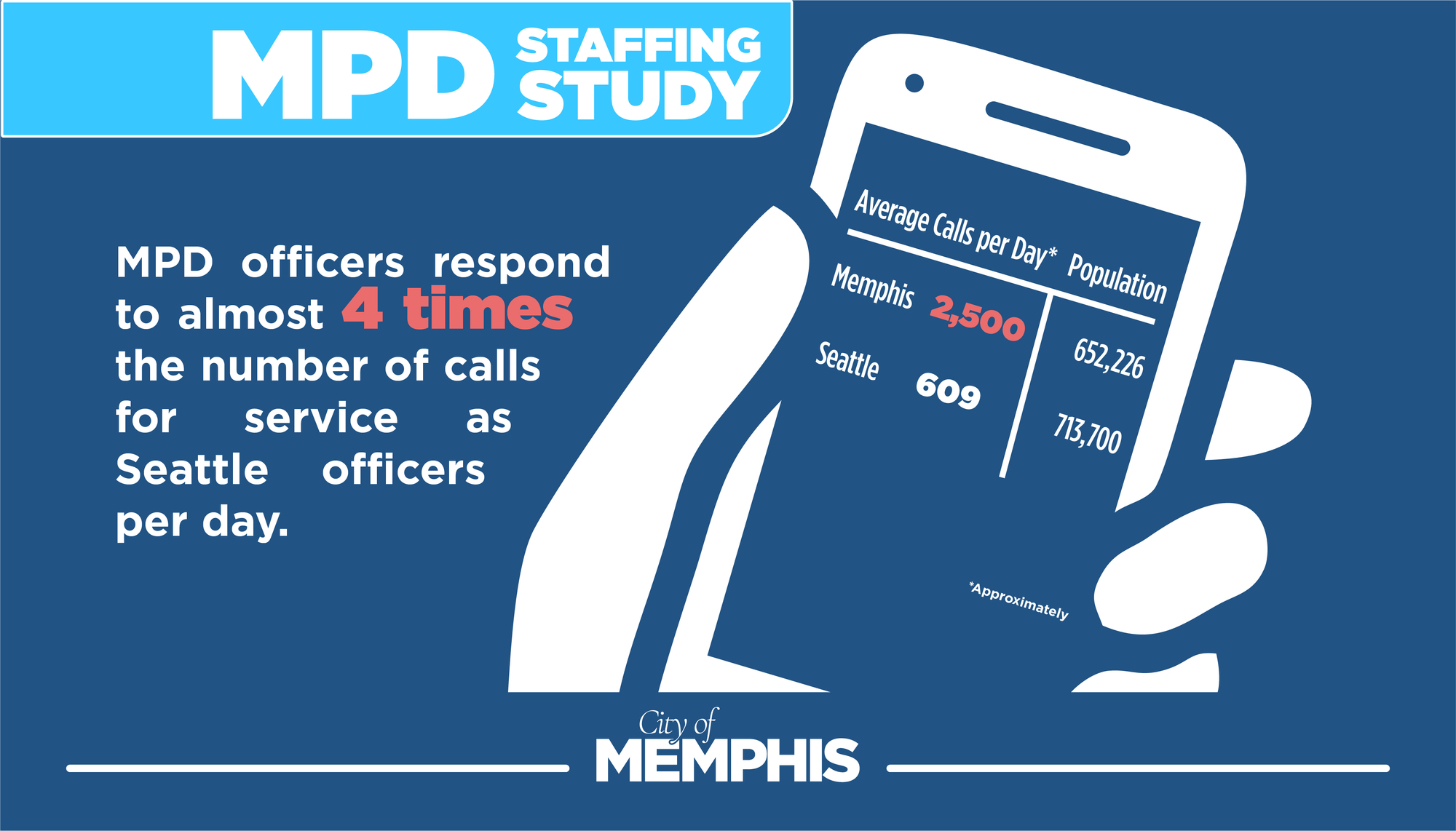
Lastly, I wanted to point out something called the 30-30-30 model, which is used by the International Association of Chiefs of Police and MPD. The model states 30 percent of an officer’s time should be spent responding to calls for service; 30 percent of time should be spent on administrative items; 30 percent for community policing; and 10 percent flexibility to accommodate any of the other core areas. The graph below shows where our officers spend their time. Due to the volume of calls for service and the geographic size of our city, our officers do not have enough time to effectively perform community policing.
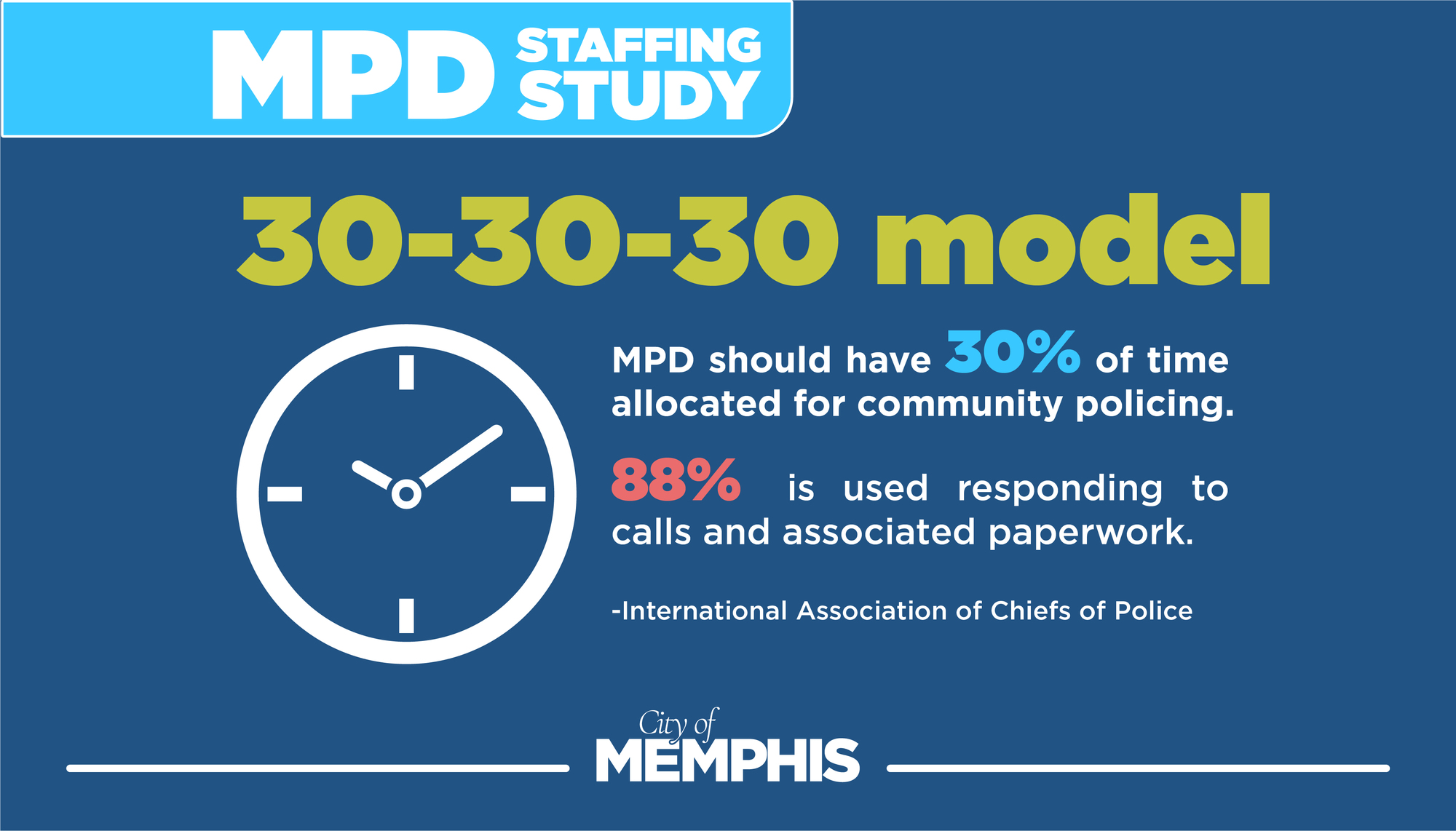
With respect to recruitment and retention, we are making progress, but we must continue to do all we can to reduce our violent crime rate. Policing is not the only tool in combating crime. We’re going to continue working to stress the importance of early childhood education through our commitment to universal Pre-K, library programming, and our youth summer jobs program. We’re also committed to helping those who need second chances through our Manhood University, W.O.W.S. and Public Service Corps. We will continue to recruit jobs and encourage people to take part in our free and successful jobs training programs offered by the State.
But, at the end of the day, we still need more officers to patrol our streets, investigate crimes, and be involved with the community if we’re going to reduce the level of violent crime in our city.
Congratulations: I’ve said this phrase several times over the last few months, but it doesn’t make it any less true—in times of crisis, you get to see someone’s true character. You get to see whether they rise to the occasion or fall back.
Our new Director of Parks and Neighborhoods who had been serving as the Interim, Nick Walker, has shown over the course of this pandemic just how strong his character is. With each task, whether it was helping to coordinate innovative ways for volunteers to help serve thousands of meals to families in need at our community centers or simply performing the normal day-to-day tasks of the job, Nick has excelled. Thank you to the City Council for approving his appointment
Congratulations on the new role. It’s very well deserved, and I look forward to working with you to keep improving our Division of Parks and Neighborhoods for all Memphians.
Yours,



